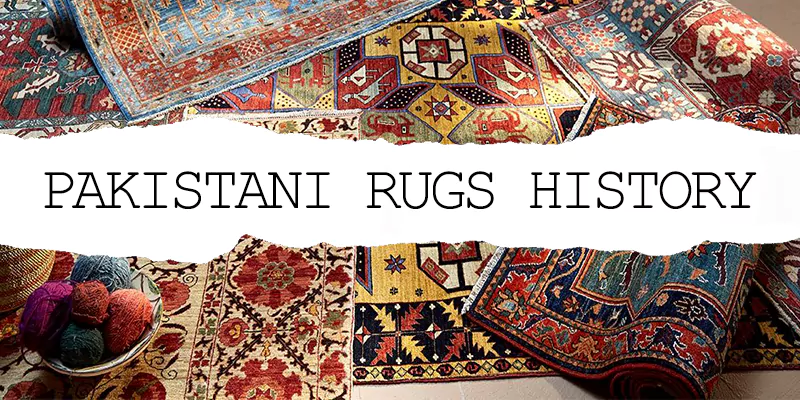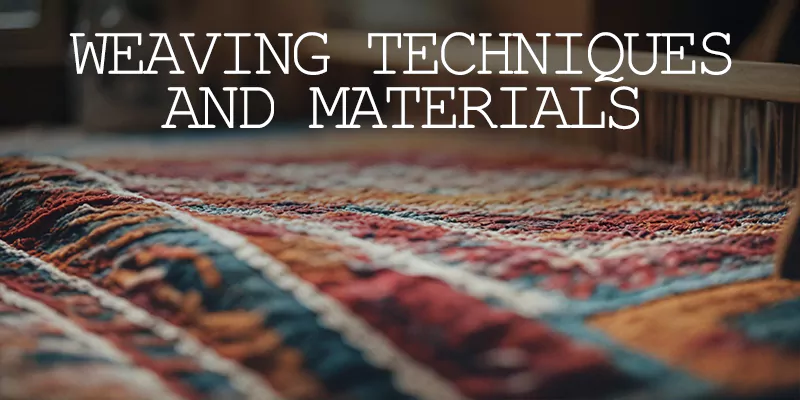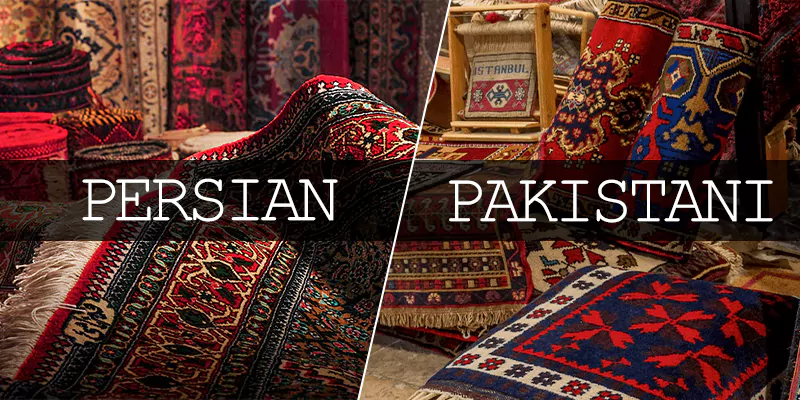- Abe
- Rug & Carpet
- 2682 views
- 0 comments
Rug weaving art in the territory of today’s Pakistan was most likely inherited from the Indus Valley civilization that was populated by the people spinning these kinds of weaving materials here using spindles at Moenjodaro and Harappa.

The History of Pakistani Rugs
It is said that carpet weaving spread to Pakistan with the arrival of the first Muslim invaders, the Turkic Ghaznavids and the Afghan Ghaurids in the eleventh century. Although there is evidence of carpet weaving before the coming of the Mughal Dynasty, the well-known carpets today were produced mainly in the first half of the 16th century and onwards. Throughout the Mughals rulers such as Akbar, Jahangir, and Shah Jahan Persian sensibilities were incorporated in the designs and craftsmanship of these luxury items classic example was the carpets where the skills of Lahore wearers were first to reach European markets.
The History of Pakistani Rugs: Post-Partition
The major transformation of the rug-weaving business was observed after the division of India and Pakistan. During the time of war, a large number of weavers belonging to Islamic origins migrated to Pakistan and were mostly settled in large cities such as Lahore and Karachi where the carpet weaving societies were quite active. These communities went on to retain Persian rug trends in their designs by putting twists on Indian styles thus giving birth to Pakistani rug styles.
Thus, the Bokhara rugs, which have always been woven by the Turkomans, were attributed to Pakistani production though the said rugs originated in a city that is now in modern-day Uzbekistan. The practice of the prison weaving programs also began during the British colonization of the region and the weaving business remained active even when Pakistan was not part of Britain.
Cyrus Crafts; Luxury & Unique Products
The History of Pakistani Rugs: Recent Years
In recent years, the production of Pakistani rugs has been rather renewed and modified to a certain extent. Afghan rug weavers who shifted their looms from Afghanistan to Pakistan have heavily contributed especially the region between Peshawar and Islamabad.
These artisans have introduced new designs and color combinations such as Peshawar and Ziegler rugs based on the called-for market in the West. Local weavers’ cooperation with global merchants has created more beautiful and higher-quality Carpets with rich and original designs utilizing the merits of wool and natural dyes. This enabled each rug that is produced to be a handmade product with all the features of artwork that go along with it, traditional as well as trendy.

Pakistani Rugs' Weaving Techniques and Materials
The population lives in the energetic and vibrant Qtrs of Faisalabad which is famous as the textile city of Pakistan, similarly, the art of weaving technique in the production of rugs shows traditional and accurate perfection. As a master weaver sits behind a small, loom and weaves the rugs by hand following the technique of Persian and Turkish rug knots.
To start with, delicate wool from Ghazni is chosen and passed through golden-colored tana bana which is created by sustaining cotton threads at equal distance from one another. Due to the utilization of this specific technique, the uniqueness of each pattern is emphasized, and the rugs are made perfectly, which is a tribute to Pakistani workmanship.
The most commonly used material is wool of high quality, purchased locally or imported; and its colors are obtained through natural dyes, including bright white, classical red, and luminous green or deep blue. The base of each rug is made of high-quality cotton that gives sturdiness to the rugs.
The Most Popular Types of Pakistani Rugs
Pakistan rugs are popular for global recognition as they are known for their fashionable patterns and quality work. Bokhara, Pak Persian, and Baluchi rugs are special among the others because of their peculiar features and the age they belong to.
Bokhara Rugs
Tekke, also known as Bokhara rug is usually appreciated for the luxurious touch along with value due to which they are associated with richness. Such rugs can be described easily due to their conventional arrangement of designs, diamond or oval in shape and known as elephant’s feet that surround a lighter color either in dark blue, brown, black, or ivory. Two famous types of this category are the Royal Bokhara and Princess Bokhara.
Pak Persian Rugs
Pak Persian rugs are a perfect example of companies that merge Pakistani and Persian styles of rug weaving. These rugs are made of pure wool and vegetable dyes, thus, the rich colors range from deep red, deep blue, and selected ivory. They are normally complex, and the fabrics offer engraved floral and geometrical motifs like 'Shah Abbasi motif' and 'Heriz motif' that relate to the sophisticated workmanship of Pakistani weavers. Pak Persian rugs are elegant and are also known to have a long lifespan, they are among the best rugs to have.
Baluchi Rugs
Baluchi rugs are made by the Baluch tribesman who live in the areas of Iran, Pakistan, and Afghanistan; the motifs applied to Baluchi rugs tend to be coarser and dark in coloring. Some of them are designed to combine geometrical shapes like hexagons, rectangles, and triangles and provide a better outlook. In the designs, black lines and shades emphasize the dimensions of the colors, making the whole rug look darker and richer.
Baluchi rug is mainly woven from wool occasionally goat or camel hair, and are very hard-wearing, and do not absorb water and stains. These are normally smaller in size because of the background of the people who made them and are known for their tribal and artsy touches with handmade productions.

Pakistani Rugs Vs Persian Rugs
If there is an Oriental rug topic somewhere, there will always be a comparison between the Pakistani carpet and the Persian rug. Both are known to be excellent creations of art and designs, although some aspects distinguish one from the other.
- Origins: Specifically, Persian and Pakistani rugs belong to the group of Oriental rugs that are most often handmade. Persian rugs are produced in Iran; these rugs are typically very complex in design with a very high pile density knit and as a result, have an elaborate pattern and are reasonably long-lasting. These rugs are the workmanship of turning skills from one generation to another; they are treasured, and many people pass these rugs from one generation to another.
- Material and Design: The genuine Persian rugs are woven with wool or silk; some sophisticated weavers use wild silk fetched from cocooned silkworms or bamboo silk, which is an environmentally friendly material. It creates a gold-like look and feel to it and it is also soft to the touch. These colorful textiles are typically a combination of floral and geometric engravings, which are closely woven to prove the craft of the weavers.
- Quality: The quality of a rug whether it is Persian or Pakistani depends on one or more of the features, among them being the material used and the way they are woven. These aspects should be looked at, rather than comparing the two based on the country from which they originate. Each type of rug may provide great shine and quality and therefore they can be considered great to purchase.
Pakistani Rug FAQs
The followings are some of the most common Frequently Asked Questions about Pakistani Rugs on the Internet and we have answered them all in detail.
What are the various types of Pakistani rugs available?
Pakistan carpets come in several styles, with at least eight distinct types being notable. These include Caucasian, Bokhara, and Shal rugs. The designs vary widely, featuring everything from foliage motifs to angular patterns. These rugs continue to be crafted in Pakistan today.
How is the quality of Pakistani rugs assessed?
Pakistani rugs are known for their exceptional quality, partly due to the high-quality wool imported from Australia. The Pakistani government actively supports the carpet industry, ensuring the use of superior yarns. The majority of carpet weavers in Pakistan are of Islamic origin, many of whom migrated from India after the Indo-Pak war.
Which area in Pakistan is renowned for producing the finest carpets?
Lahore is recognized as the center of handmade carpet manufacturing in Pakistan. This region has an abundant supply of raw materials, primarily wool, the quality of which depends on the sheep breed.









Comments (0)